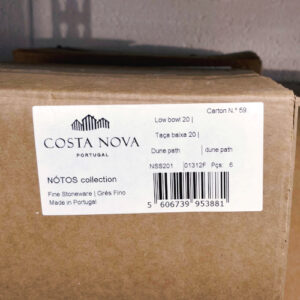Re-Platforming your Site? Check Your Product IDs!

In the past few months we’ve had a few clients re-platform their ecommerce websites and one of the bigger challenges we’ve faced has been assuring the quality of the product feeds for the Google Merchant Centre and other tools.
In one instance we had a client who moved from Shopify to WooCommerce, in another they moved from OpenCart to WooCommerce and the last – a client we acquired 3 weeks after the transition – moved from a custom site to WooCommerce.
In the first two we had very close relationships with the client and could advise them on what data we wanted for Google Ads and the product feed. It meant we did a lot of leg work up front to ensure we had a similar if not better result from the new feeds. In the last example where they moved from a custom website to a WooCommerce site, their agency wasn’t very engaged and didn’t particularly express any advice or opinion for the move. Needless to say there ended up being a major issue.
The biggest problem we see when re-platforming is product IDs. In the great wisdom of WooCommerce, Shopify, OpenCart, ShopWare, VisualSoft and others they use incrementing or internal platform IDs as the product IDs – even today. Before when Google Shopping was but a twinkle in Google’s eye and only Google Base existed it didn’t matter. Having a unique identifier that no-one else uses wasn’t really a problem as it no one saw it or ever cared. The problem arose when Google Merchant Centre came into being and these “internal” IDs were used there.
Here’s a little context to how Google uses product IDs. The products’ history and relevance are all tied to its “Item ID”. So, if you have a product with a rich history of performance and change its Item ID in your product feed, then Google Merchant Centre sees that as an entirely new product, despite having the same URL, GTIN (EAN/Barcode), Image, Product Title and Manufacturer Part Number (MPN). It’s a behaviour which some businesses like Shoptimised use to great effect by duplicating under performing products with a new Item ID with all of the same product data but a new lease of life. So, if you re-platform from say Shopify, which uses a product ID format of randomly generated numbers, to WooCommerce, which uses sequential numbers, your feed will have different Product IDs and Google Ads will assume these are all new products meaning your campaigns will go back into a learning phase. This can be expensive and inefficient when you already know what works.
So, with this comes the task of creating matching lists and utilising the old IDs in the new platform and ensuring they are passed correctly in your product feed to platforms like Google Merchant Centre. In the case of the account where this didn’t happen and new IDs were used, Google Shopping Impression Shares dropped by 81% despite Impressions increasing. We won’t comment on Conversion Rates, as even though they went down it was a new website that needed error checking and refining. But the reality is that Google went into a learning phase so was spreading the products thinly across a lot of different Shopping queries instead of focusing on what it knew worked well in the past.
The other two sites where we did the hard work of ensuring that the legacy IDs were passed to the new feed saw no difference at all. So, make sure you talk to your agency if you’re re-platforming and get them to look at your feeds and tell you what they need.
If you’re starting a new site or product feed I do have one bit of parting advice. If you can manage to set the product IDs as either the SKU or the MPN it will help any re-platforms in the future as these fields will naturally be passed onto the new website platform and already be available to add to the feed straight away with no need for lookups or coding magic.